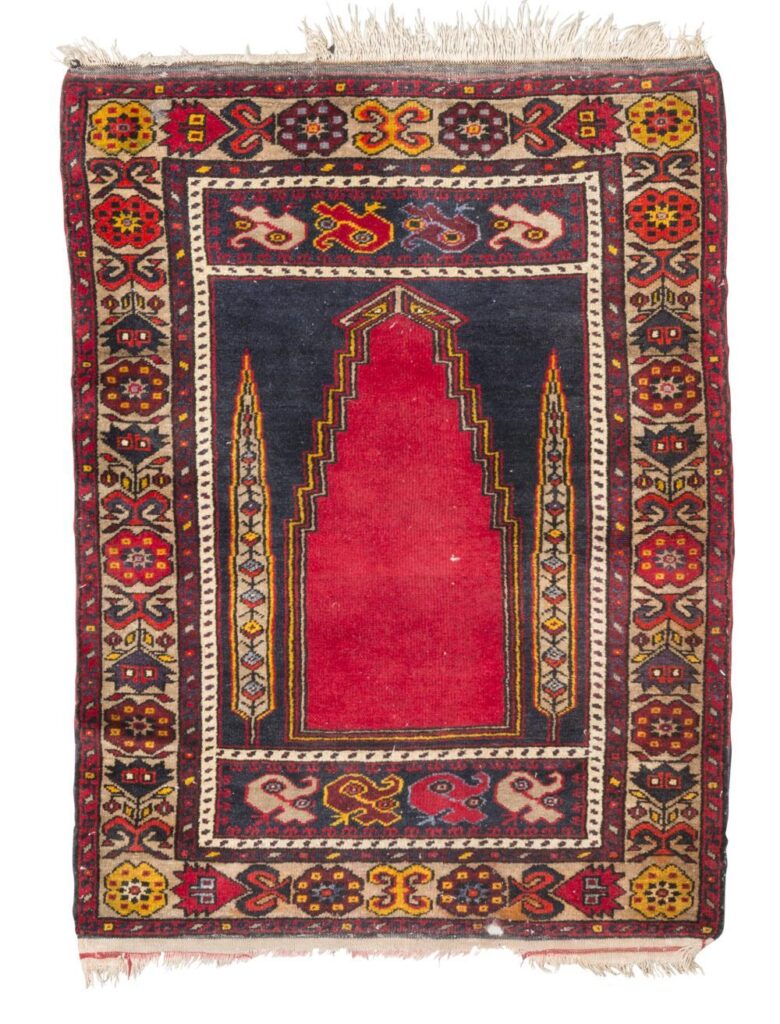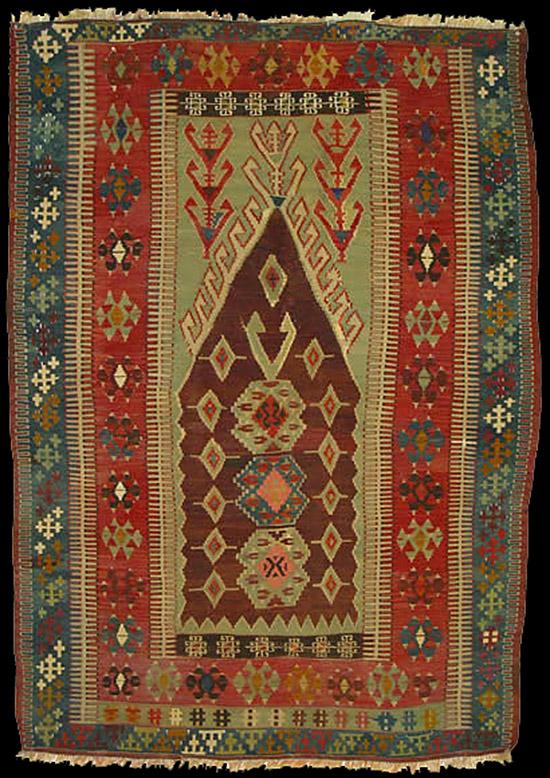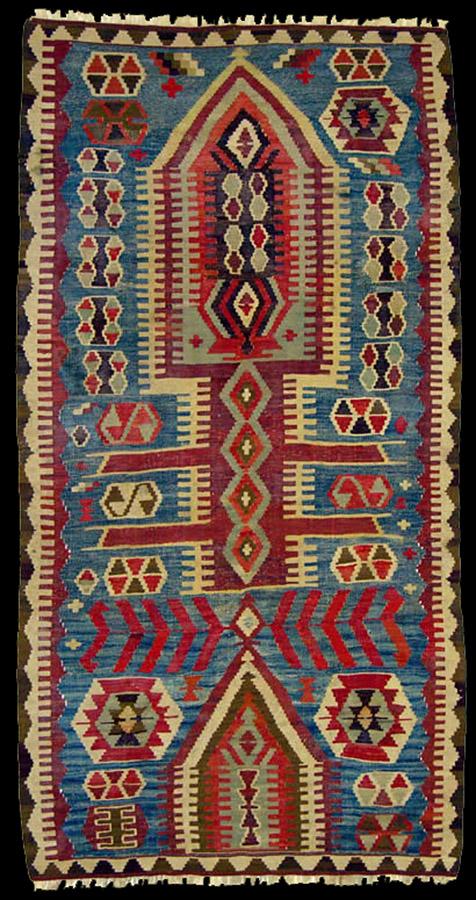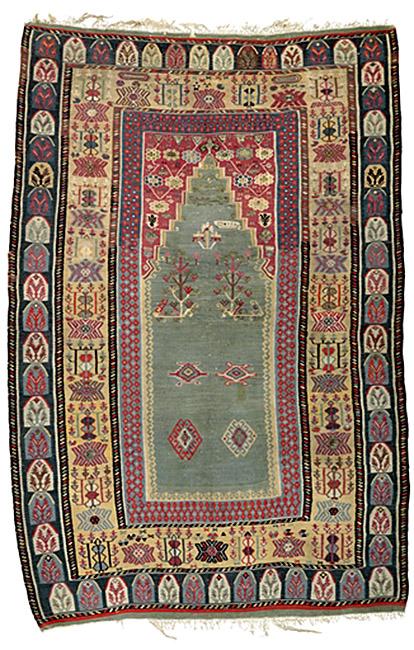Obruk Rugs

Obruk is a village in Bor District of Niğde Province, in the Central Anatolia region of Turkey. The area is situated just north of the Taurus Mountains, not far from the Cilician Gates (Gülek Boğazı), the mountain pass leading to Cilicia and Syria, and has long been a place of commercial and military importance.
The plain has been settled since the time of the Hittites, and subsequently controlled by Assyrians, Phrygians, Persians and Ancient Macedonians. The Romans (and from 395 AD onwards Byzantium) built the ancient city of Tyana the most southernmost center of Cappadocia.
The area’s economy depends on grazing animals, plus some carpet weaving and leather-making. The small village of Obruk in Bor has been a source of rugs and kilim since the 19th century. Antique Obruk pieces may be categorized under ‘Konya’.
Technical aspects and the structure of Obruk Rugs
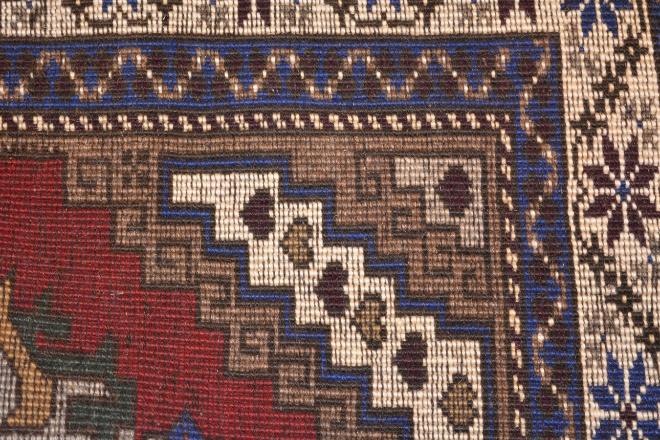
Obruk rugs are woven with symmetrical (Turkish or Gördes) knots. Obruk piled rugs are coarsely woven, showing the tribal roots of the weavers. In opposite, flat-weaves made in Obruk are considered as fine-woven kilims. Prayer rug sizes are very common in Obruk for both rugs and kilims. Kilims share the common Anatolian flat-weave structure. Yastiks may be found here in Obruk.
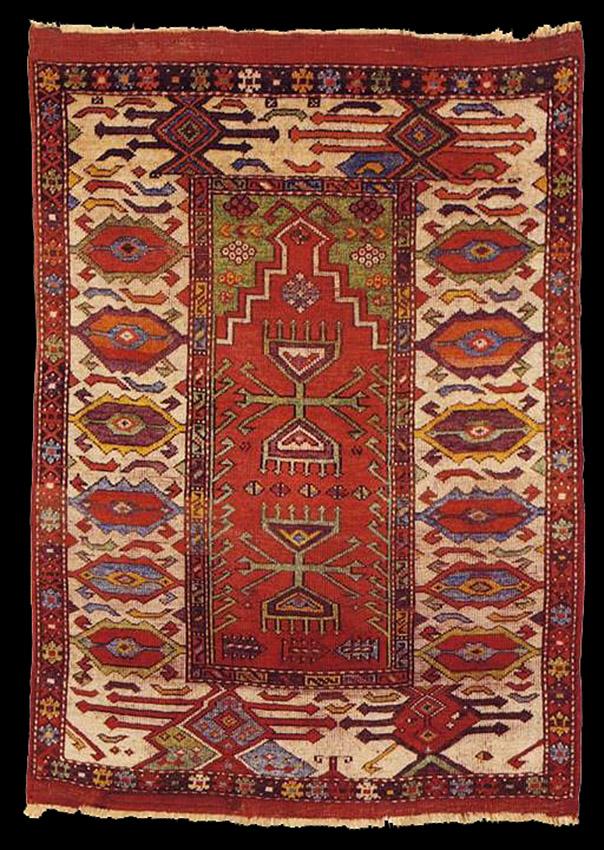
Dyeing and painting of Obruk Rugs
Obruk Palette is dominated by red, blue, and yellow. Generally, the tones are saturated and pastel here. Secondary Palette may include a wide range. Shades of red, orange, green, brown and ivory. Deep shades of pink like rosy and salmon are eye-catching. Green tend to olive. Sea green is also used. Kilims are mostly colorful. Light blue-dominated kilims are found.

Designs and patterns of Obruk Rugs
Prayer rugs and prayer kilims are the most common pieces in Obruk. Obruk prayer rugs have pointed mihrabs. Some prayer rugs have wide borders and narrow mihrabs. Mihrabs are hooked. Geometric tree-of-life motifs are also used in prayer designs, usually in pair. Amulet motifs are used. Borders may be designed with rather large rosettes.
Kilims have usually wide borders designed with a zigzag stripe. Pole medallion is a common design here for flat-weaves. Medallions are often hooked hexagons or lozenges.
